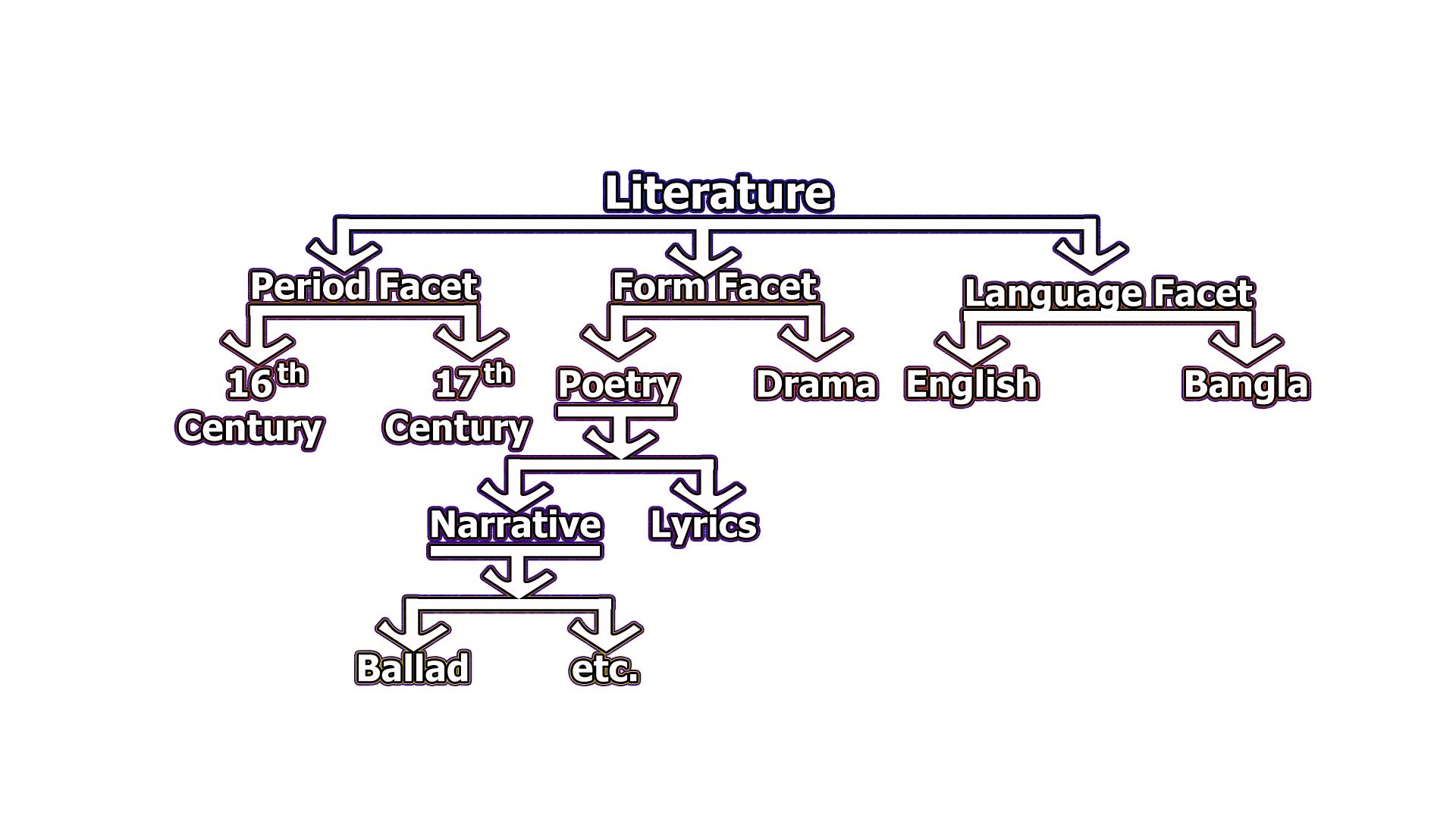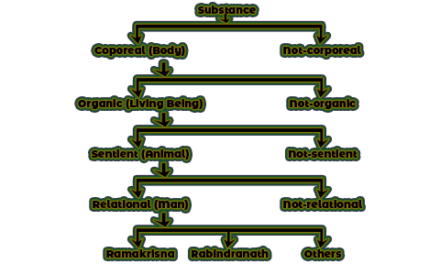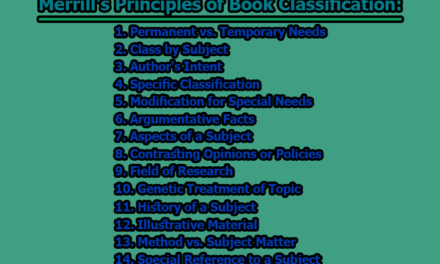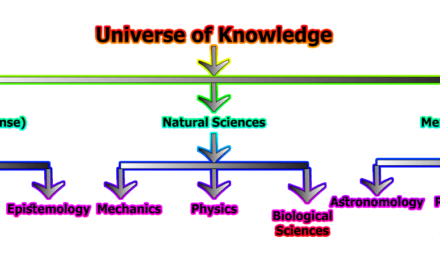Procedures of making an Analytico-synthetic Classification Scheme
Analytico-synthetic Library classification schemes resolve some of the problems of enumerative classification schemes. The concept behind this scheme is that the subject of a given document will be divided into its constituent elements and then the classification scheme will be used to find notations for each element, which will then be combined according to the prescribed rules to prepare the final class number. This scheme overcomes the two major problems of enumerative classification schemes as, by providing various tables, specific notational symbols, and rules, they avoid the necessity for a long list of classes, and thus produce a smaller classification scheme in size; they also provide flexibility to users as specific numbers can be built and the classifier is not restricted by the availability of a specific subject. Nevertheless, it makes classifiers’ jobs complex since they have to construct the class numbers as opposed to just selecting one from a list like Universal Decimal Classification. In the rest of this article, we are going to know about the Procedures of making an Analytico-synthetic Classification Scheme.
“Analytico-synthetic classification scheme is used to denote any scheme in which a compound subject is first analyzed into its facets in the idea plane and later synthesized in the verbal plane and in the notational plane respectively” (S. R. Ranganathan).
Procedures of making an Analytico-synthetic Classification Scheme:
A classification scheme is simply defined as, “an orderly arrangement of terms or classes”, given a notation, a classification scheme can be used to arrange documents or entries in the catalog and it’s the only way of achieving a preferred order of subjects. Some necessary procedures of making an analytico-synthesis classification scheme are given below with a brief description:
Step-1: Analysis: If a classification scheme is composed of simple concepts and if some means of combining them in a preferred order is designed, then the scheme will be capable of accommodating the vast majority of new subjects as they arise.
For example; if the notational symbol ‘L’ represents Literature, ‘b’ represents Novel, and ‘e’ represents English, then the combination of ‘Leb’ will stand for the subject, ‘The English Novel’.
Synthetic is the term used to refer to the creation of compound subjects by combining simple elements.
The first job of a subject classification scheme will be to examine a representative sample of documents in that subject, covering all topics within the subject, the listing concepts as they arise. In this way, all simple concepts will be discovered (they will be concepts actually arising in documents, they will have a literary warrant) concepts in this unorganized state are often called isolates.
Step-2: Creation of Facets: A characteristic an attribute by which concepts are grouped or objects divided. The sum total of isolates formed by the division of a subject by one characteristic of division is called a facet.
The isolates within a facet are called foci to distinguish them from the unorganized concepts called isolates. This process of analysis is called facet analysis and a scheme produced after such analysis is faceted classification.
|
Category of Facet |
Subject |
Example of Foci |
|
Materials |
Engineering, Textiles, Painting |
Steel, plastics, wool, cotton, nylon, water, paint, oil. |
Ranganathan suggested that there are basically, five categories, which he called; Personality, Matter, Energy, Space, and Time (PMEST).
Once the facets are established, the foci within them may need further grouping into subordinate facets or sub-facets. In the class literature, foci in the form facet may be grouped as the following figure:
Step-3: Arrangement of Foci: The next task is to arrange the foci in some order. Ranganathan has listed the following principles for the arrangement of foci; evolutionary, chronologically, geographical, increasing complexity, alphabetical, canonical, consistent.
What order is chosen for a particular group of foci will depend on the subject. Thus, the arrangement of place names according to geographical proximity is preferable to an arbitrary alphabetical arrangement. Similarly, Biological species are best arranged according to the evolutionary principle, Chronological arrangement is clearly for the development, or sequence of a subject e.g. painting process or agriculture operations.
Step-4: Deciding on the combination order of facet: A combination order must be laid down, without these documents on the same subject may be classified at different places.
The best combination order for a subject will depend to some extent on the needs of users and their approaches to the subject should be carefully analyzed.
In the field of literature, students normally confine their studies to the literature of a particular language, rather than period or form. And within a particular language, they normally study period rather than form. And therefore the combination order should be language-period-form.
Step-5: Arrangement of Facets in the Scheme Schedule Order: The final decision before the notation is added is the relative order of the facets in the scheme itself. For example; should be the layout be;
| a. Education |
b. Education |
|
Grade Facet: Primary, Secondary, Higher, etc. |
Subjective thought facet: Science, Literature, History, etc. |
|
Subjective thought facet: Science, Literature, History, etc. |
Grade Facet: Primary, Secondary, Higher, etc. |
Two types of approaches are followed here; (i) General to proceed special; e.g. Wheat and Harvesting, in general, would proceed the compound Harvesting of Wheat, and (ii) if we wish to achieve the order of increasing specialty (special to general); then the order of facets in the scheme must be the reverse of the combination order in education is Grade-subject, then the scheduling order must be subject-Grade. In this way, the most significant facet will file often the less significant. If, however, an order of increasing specialty isn’t considered important the order of facets in the schedule should be simply that of the combination order.
Step-6: Notation: The last stage apart from the index, is to add a notation to mechanize the arrangement. Here pure notation or mixed notation can be used.
Step-7: Making the Index: An index necessary; (a) to indicate the location in the schedules of a sought term, and (b) to arrange distributed relatives’ indexes that meet the second objective have been called relative indexes. Another type of index is the specific index, which helps to find out terms as well as shows the relationships amongst them.
Finally, we can say that, analytico-synthetic classification scheme in the exploration of this system and revisiting our theory of meaning in knowledge organization, to consider which contexts matter and which don’t in our pragmatic systems design mentality, and show the explicit relationship structure in different ways.

Assistant Teacher at Zinzira Pir Mohammad Pilot School and College










